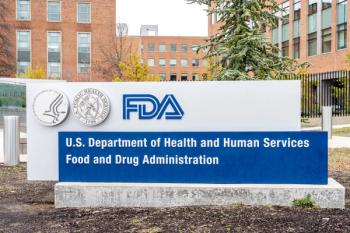
- Applied Clinical Trials-10-01-2013
- Volume 22
- Issue 10
Assessing Drug Impaired (or Enhanced) Driving
Expect the FDA to be looking at a new metric in the drug approval process: driving safety.
I believe 2013 will go down as the year driver impairment became a critical metric for the FDA's review of drugs, the market, and the OTC classes. This year has seen the FDA consider driving data when taking action on the recommended dosage for zolpidem, the safety of higher doses of suvorexant (Merck's insomnia drug under consideration), and in their issuance of broad warnings on sedating antihistamines. The agency has shown particular concern about next day residual effects following nighttime dosing.
Although specific guidance has yet to be provided by the FDA, the message should be clear to pharmaceutical manufacturers—be aware of the FDA's focus on potential driving impairment. Approvals may pivot on, or be delayed by, the lack of driving data.
In 2008, I was asked by the Department of Transportation's National Highway Traffic Safety Administration (NHTSA) to serve on an international panel of experts from the fields of pharmacology, toxicology, epidemiology, and behavioral sciences. The panel was tasked with developing a standardized methodology for evaluating the impact of drugs on driving. The NTSB recommended that the government develop a list of approved medications and classes of medications that may be used safely when operating a vehicle.
In the resulting panel report that I co-authored, "Drugged Driving Expert Panel Report: A Consensus Protocol for Assessing the Potential of Drugs to Impair Driving." (G. G. Kay and B. K. Logan, (2011), the expert panel agreed that even among drugs generally considered safe for driving, adverse reactions and/or interactions may occur between these medications and other drugs or alcohol that could impair driving performance. Development of a list of "safe" drugs for driving was abandoned, however the panel agreed on the need for a common, standardized protocol for assessing the potential for drugs that impair driving. The protocol consists of a tiered, parallel assessment process.
Driving is a highly complex activity involving a wide range of cognitive, perceptual, and motor activities. Research has identified the abilities and driving-related tasks that are critical to safe driving that can be measured using standardized, validated laboratory measures. The next level in the proposed tiered approach is the application of driving tasks; including driving simulators, closed-course driving studies, on-the-road driving studies, and instrumented vehicles.
For the purposes of clinical trials there are basically two approaches to driving assessment: high-fidelity driving simulators or on-the-road testing. The FDA has recently signaled that it is open to data collected using either methodology. It is my belief that driving simulation will soon be the method of choice for the pharmaceutical industry due to proven comparability to on-the-road testing and advantages with respect to speed, cost, and quality of data.
Driving simulators can provide a variety of scenarios and driving challenges. The scenarios are not limited to highway driving. Data is collected at a rate 30 times the rate collected in an on-the-road vehicle. Alcohol comparisons for the driving simulator are based upon the identical scenario used in testing; not historical data (as is the case for the on-the-road test). There is no risk of damage to vehicles or resulting injuries to driver and/or instructor, and multiple simulators can be installed at clinical sites for multicenter clinical trials.
For pharmaceutical manufacturers, a crucial lesson for 2013 is clear; expect the FDA to be looking at a new metric in the drug approval process: driving safety.
Gary G. Kay, PhD, President Cognitive Research Corporation
Articles in this issue
about 12 years ago
ACT Coverabout 12 years ago
Relationships Between Advocacy Groups and Pharmaabout 12 years ago
Does European Policy Still Have Room for Clinical Trials?about 12 years ago
Business and People October 2013about 12 years ago
EMA Unveils New Structure and Conflicts of Interestabout 12 years ago
Personalized Medicine, Data, and Meabout 12 years ago
Bridging the Disconnect in Pediatric Clinical Trial Recruitmentabout 12 years ago
The State of CRO and Sponsor Relationshipsabout 12 years ago
Smart Patients, Smarter TrialsNewsletter
Stay current in clinical research with Applied Clinical Trials, providing expert insights, regulatory updates, and practical strategies for successful clinical trial design and execution.




